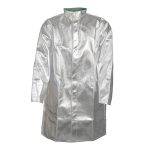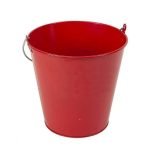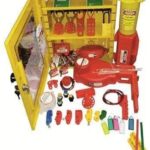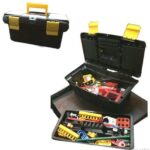Your list is empty, add products to the list to send a request
How to Choose a Gas Leak Detector: Complete Buying Guide

29
Jul
Gas leaks are silent threats. They don’t always have a smell. They don’t always make a sound. But if unnoticed, they can turn into fire hazards, explosions, or even health emergencies.
That’s why choosing the right gas leak detector is a decision you shouldn’t take lightly. Whether it’s for your home kitchen, restaurant, warehouse, or fuel station, you need a detector that actually works, alerts you instantly, and fits your space.
In this guide, you’ll learn exactly how to choose a gas leak detector. We’ll cover what to look for, how detectors work, which gas types to consider, and why the True Safe gas leak detector stands out as a reliable and cost-effective choice for Indian homes and businesses.
What Is a Gas Leak Detector?
A gas leak detector is an electronic device that detects the presence of gases like LPG (liquefied petroleum gas), PNG (piped natural gas), and CNG (compressed natural gas) in your environment. If gas levels rise beyond safe limits, the detector sounds an alarm to alert you.
Some detectors, like the True Safe gas leak detector, also feature a visual alarm and can integrate with automatic shutoff valves.
Why You Need a Gas Leak Detector
Here’s why having a detector isn’t optional—it’s essential:
- Prevents explosions caused by unnoticed gas build-up
- Protects health by reducing exposure to harmful gases
- Minimises property damage by enabling fast response
- Offers peace of mind, especially if you have kids, seniors, or workers in the area
How to Choose a Gas Leak Detector
Not all detectors are created equal. Here’s how to pick the one that suits your space and needs.
- Identify the Type of Gas You Use
The first step is to match the detector to the gas in your environment:
| Gas Type | Common Use | Best Detector Placement |
| LPG | Home kitchens, commercial gas stoves | 15-30 cm above floor level |
| PNG | Piped gas systems | 15-30 cm below ceiling |
| CNG | Vehicles, some industrial kitchens | High on the wall or ceiling |
Make sure the detector explicitly mentions which gas types it can sense. The True Safe gas leak detector covers LPG, PNG, and CNG, making it a flexible choice for most scenarios.
- Choose the Right Sensor Type
Different gas detectors use different sensing technologies:
- Semiconductor Sensors: Affordable, stable, and ideal for home use
- Electrochemical Sensors: Accurate and used in industrial detectors
- Infrared Sensors: High-end, used in commercial or mission-critical setups
For most residential and small business uses, semiconductor sensors—as used in True Safe detectors—are both cost-effective and reliable.
- Look for These Key Features
Before buying, ensure the detector has these essentials:
- Loud audible alarm (minimum 85 dB)
- LED indicators for power, fault, and gas detection
- Automatic reactivation after false alarms or resets
- Test and reset buttons
- BIS or CE certification
- Wall-mountable design
- Long sensor life (5 years minimum)
The True Safe gas leak detector checks all of these boxes.
- Choose the Right Location
Even the best detector will fail if installed in the wrong spot.
- For LPG (heavier than air), install near the floor.
- For PNG or CNG (lighter than air), install near the ceiling.
- Keep detectors away from windows, vents, or fans.
- Avoid placing them directly over stoves or heat sources.
Also, make sure they’re easily visible and audible from areas you frequent—like bedrooms or living rooms.
- Power Source and Backup
Most detectors are plug-in types with a battery backup. Look for detectors with:
- Low power consumption
- Voltage surge protection
- Battery alerts or indicators
The True Safe gas leak detector runs on standard AC power and provides consistent performance with minimal energy use.
Benefits of the True Safe Gas Leak Detector
Here’s why it’s one of the top-rated detectors for Indian environments:
Features:
- Compatible with LPG, PNG, and CNG
- Loud 85dB alarm
- Bright LED alerts
- Easy test/reset button
- Microprocessor-controlled sensing
- Compact, wall-mountable body
- Made for Indian humidity and temperatures
- BIS and CE certified for safety
Best For:
- Residential kitchens
- Food trucks and commercial kitchens
- Hostels and paying guest accommodations
- Offices with canteens
- Small-scale industries using gas appliances
Quick Comparison: True Safe vs Generic Detectors
| Feature | True Safe | Generic Models |
| Gas Types | LPG, PNG, CNG | Usually one type |
| Alarm Sound | 85 dB | 60–70 dB |
| Certifications | BIS, CE | Often uncertified |
| Build | Heat- and humidity-resistant | Generic plastic |
| Power Use | Low | May overheat |
| Price | Affordable | Similar or more expensive |
Maintenance and Testing Tips
Even the best gas detector needs regular checks:
- Monthly: Press the test button to confirm alarm works
- Quarterly: Dust off the sensor and inspect wiring
- Yearly: Get a professional checkup if in a high-risk zone
- Immediately: Replace if you notice alarm issues or damage
Frequently Asked Questions
1. What is the best way to detect a gas leak?
The best and safest way is by using a dedicated gas leak detector like the True Safe gas leak detector. It senses dangerous levels and alerts you instantly—much more reliable than waiting to smell gas or hear a hissing sound.
2. How do I choose a gas detector?
Choose based on:
- The type of gas you use (LPG, PNG, CNG)
- Sensor type (semiconductor is ideal for homes)
- Safety certifications (BIS, CE)
- Features like alarm loudness, LED indicators, and test/reset buttons
- Brand reliability and power efficiency
The True Safe gas leak detector is a great all-in-one solution for most Indian use cases.
3. Where is the best place to put a gas detector?
- For LPG, install 15–30 cm above the floor, near the source.
- For PNG or CNG, install 15–30 cm below the ceiling, near pipelines.
Avoid installing too close to cooktops, windows, or in dead-air corners.
Final Thoughts
Choosing the right gas leak detector can make all the difference when it comes to fire prevention and personal safety. From gas type compatibility to alarm strength and certifications, you want a unit that’s reliable and built for your environment.
The True Safe gas leak detector offers the perfect balance of affordability, quality, and performance—whether it’s for a modern home kitchen, commercial tandoor station, or hostel cooking area.
Ready to protect your space from invisible dangers?
Buy the True Safe Gas Leak Detector now from Fire Supplies, and stay one step ahead of gas-related risks. Safe living starts with smart safety choices.



























